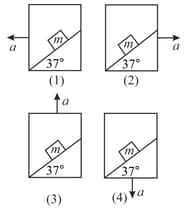The accelerations of a particle as observed from two different frames and have equal magnitudes of .

Important Questions on Newton's Laws of Motion (Without Friction)
In the given figure, blocks , and of mass each have acceleration , and , respectively. and are external forces of magnitude and , respectively. Then
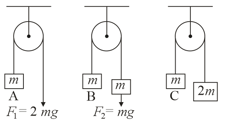
A block of mass is placed in contact with one end of a smooth tube of mass . A horizontal force acts on the tube in each case and . Then
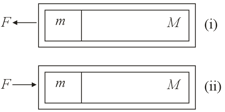
In the given figure, a man of true mass is standing on a weighing machine placed in a cabin. The cabin is joined by a string with a body of mass . Assuming no friction, and negligible mass of cabin and weighing machine, the measured mass of man is (normal force between the man and the machine is proportional to the mass)
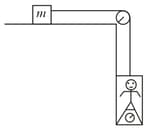
The string shown in figure passes over a small smooth pulley rigidly attached to trolley . If the speed of trolley is constant and equal to towards right, the speed and magnitude of acceleration of block at the instant shown in figure are,
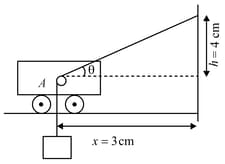
The given figure shows a block of mass placed on a smooth wedge of mass . Calculate the minimum value of and tension in the string so that the block of mass moves vertically downward with acceleration .
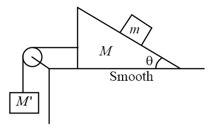
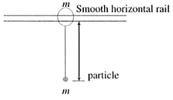
In the given figure, a small block of mass is kept on the block of mass . Then
A block of mass is placed on a wedge. The wedge can be accelerated in four manners marked as and as shown in figure. If the normal reactions in situations and are and , respectively and acceleration with which the block slides on the wedge in the situations are and , respectively. Then
